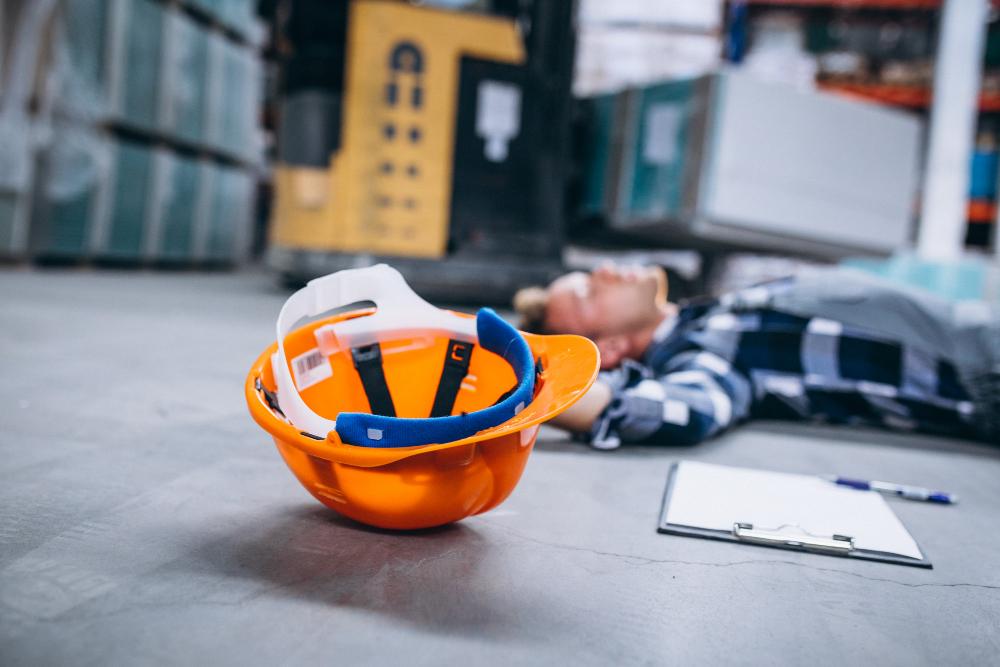Workplace injuries can cost companies significant amounts of money in medical bills, insurance claims, and organisational disruption. Often these costs go unnoticed until a situation is too far gone and an employee’s physical or mental anguish has already occurred—but it doesn’t have to be this way. By educating your managers and workers on how to avoid workplace injuries, you can actively protect your business from unnecessary expenses. In this blog post, we will look over the true financial impact of workplace injuries and provide 6 tips for preventing them altogether. Stay tuned!
1. Understand the financial impact of workplace injuries.
Workplace injuries can have a significant financial impact on both employees and employers. Not only can the direct costs of medical bills and lost wages add up quickly, but there are also indirect costs to consider. These can include various expenses such as hiring temporary workers, finding replacements, and re-training new employees. Furthermore, workplace injuries can also impact employee morale, decreasing productivity and causing a hostile workplace atmosphere. Understanding the financial implications of workplace injuries is essential for employees and employers.
By proactively implementing safety measures and taking preventative measures, everyone can work together to help reduce the likelihood of on-the-job injuries and thus minimise their financial impact.
2. List the common causes of workplace injuries and how to prevent them.
Workplace injuries are common and can negatively impact not only the injured employee but also the productivity of the entire organisation. The following are some of the frequent reasons for workplace injuries:
- Slips and falls
- Lifting heavy objects
- Repetitive motion
- Electrical hazards
Educating employees on proper lifting techniques, ensuring the work environment is well-maintained, and providing adequate safety gear is necessary to prevent these accidents.
Regular safety audits and inspections identify potential hazards and reduce the risk of accidents. In addition, workplace safety should be treated as a top priority, and taking preventive measures can go a long way in reducing any hazards.


3. Explore filing a workers’ compensation claim to cover medical costs.
Getting injured in the workplace can be a stressful and painful experience, but filing a workers’ compensation claim can help reduce some of the financial burdens. In most cases, employers must provide their employees with workers’ compensation insurance, which covers medical expenses and lost wages due to work-related injuries or illnesses. It’s essential to act quickly and report the injury or illness to your employer immediately, then follow the necessary procedures to file a claim. While the process may seem daunting initially, it’s worth exploring to ensure you receive the proper medical care and compensation you deserve.
4. Review employee safety protocols and procedures to ensure compliance.
As an employer, nothing is more essential than ensuring employees feel safe and secure at work. Taking the time to review your company’s safety protocols and procedures can greatly contribute to the peace of mind of your employees. Not only does it protect your employees from accidents and injuries, but it also ensures that your business is compliant with health and safety regulations. By evaluating your current practices and making any necessary updates, you are prioritising your employees’ well-being and protecting your company’s reputation. Finally, evaluating the 4 Parts of TILE risk assessment helps you properly review the compliance issue.
With everyone on board and following the same safety guidelines, you can create a more robust and safer work environment.
5. Invest in ergonomic equipment.
Investing in ergonomic equipment, such as chairs and desks, can improve your overall posture and help prevent physical strain. Spending extended periods sitting at work or home can negatively affect your body, leading to discomfort and potential injury. But, with the right support, maintaining good posture can alleviate pain and discomfort. Investing in ergonomic equipment to take charge of your health and well-being is an intelligent decision. Regular exercise enhances physical fitness, amplifies productivity, and elevates overall quality of life. So, make the switch to ergonomic equipment and reap the benefits. Your body will thank you.
6. Promote healthy workplace practices – encourage employees to stretch regularly, take breaks, and get enough rest before starting their day.
As work can often be demanding and fast-paced, it’s essential to prioritise healthy practices to maintain a balance in our daily routines. Encouraging employees to stretch regularly, take breaks, and get enough rest before starting their day can significantly impact their physical and mental well-being. Not only will this promote healthier habits, but it can also increase productivity and reduce the risk of workplace injuries. By implementing these practices, we can create a more energised and positive work environment where our team can thrive and perform at their best. So let’s prioritise our health and make small changes in our work behaviour that can enormously impact our overall well-being. 
Conclusion
Hope these 6 tips assist you in determining the various costs of workplace injuries and how to avoid them. Workplace injuries are a significant financial burden for employers and employees alike. To reduce the chance of an incident, employers should review employee safety protocols, invest in ergonomic equipment, and promote good habits among their staff. Companies should also remain aware that workers’ compensation is available to cover medical costs related to any workplace-related injuries. By being prepared and taking preventive measures, businesses can prevent the physical and financial costs of workplace injuries. Despite our best efforts, workplace accidents will still happen – they’re inevitable at times – but if we work together to minimise their occurrence, we can help ensure our workplaces are safe and productive.
